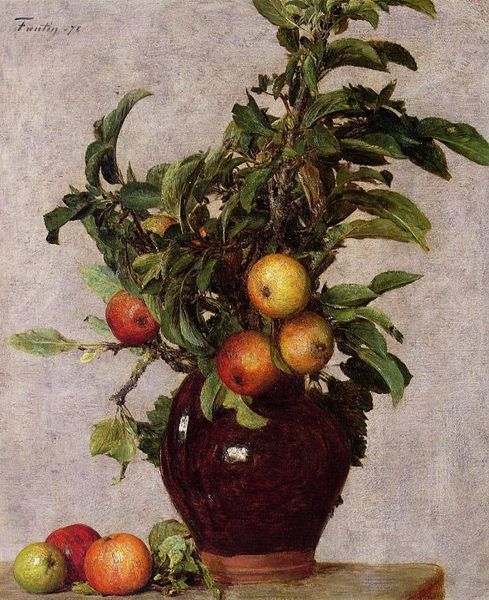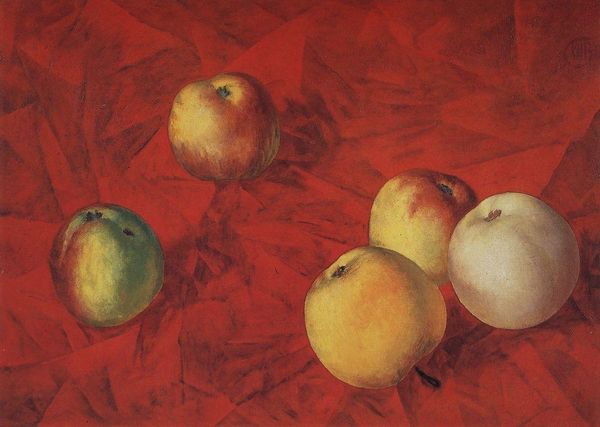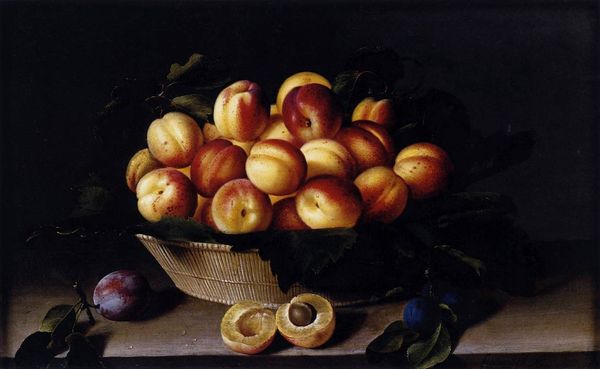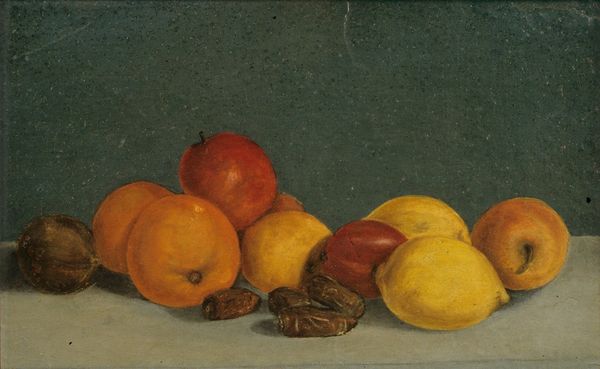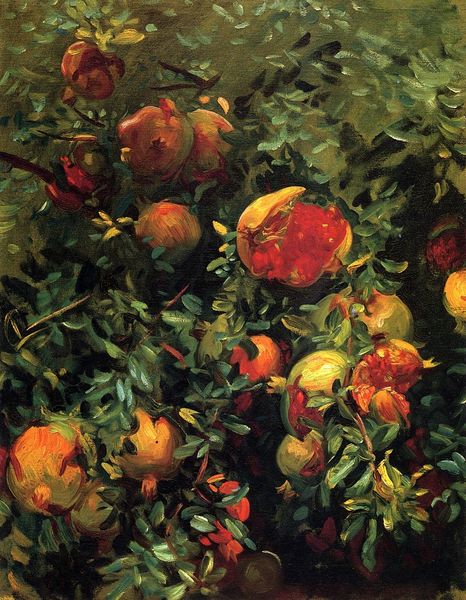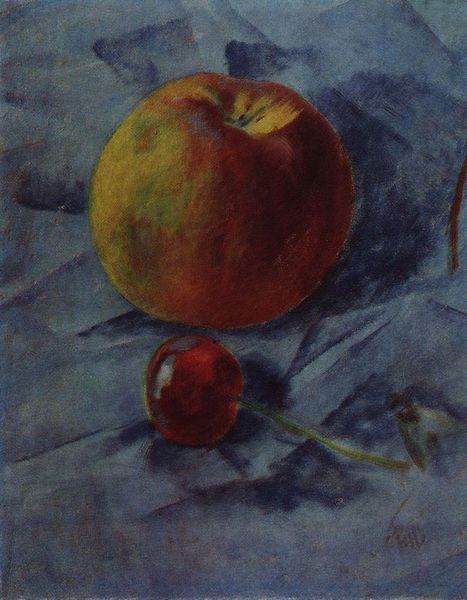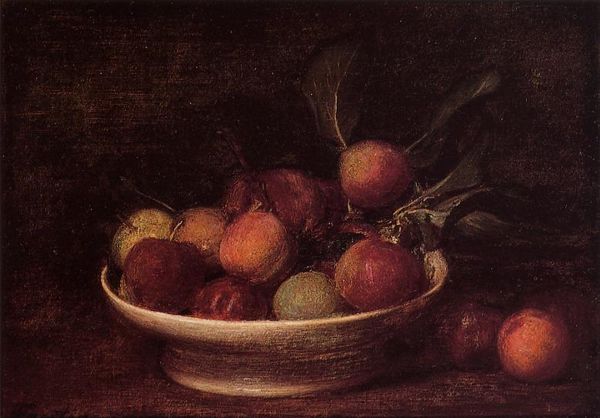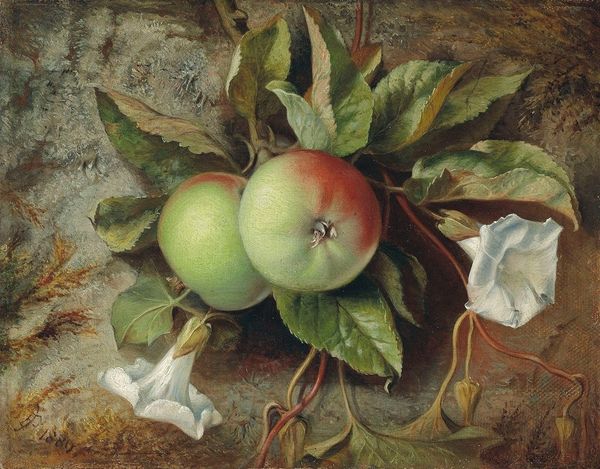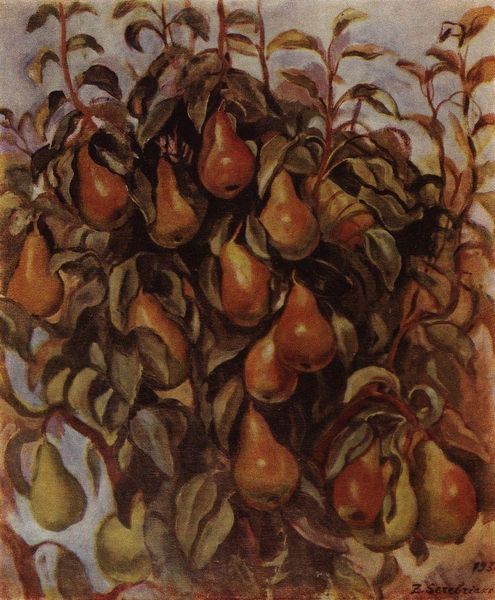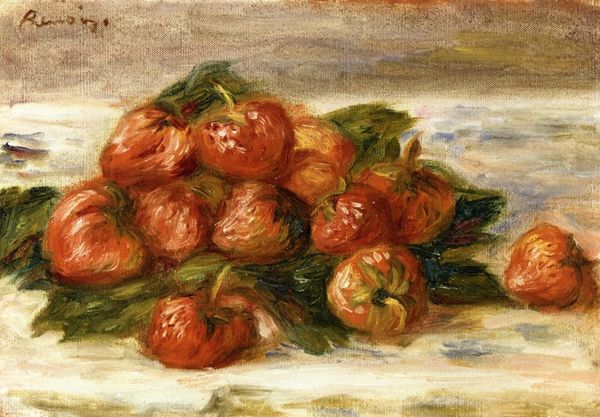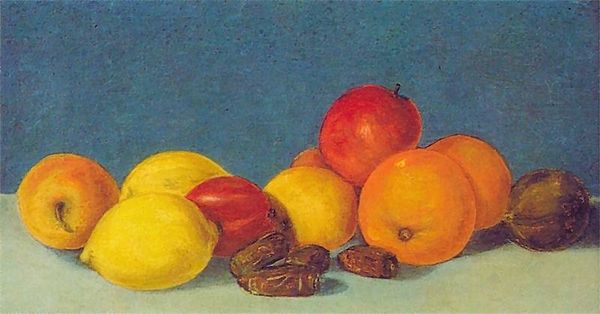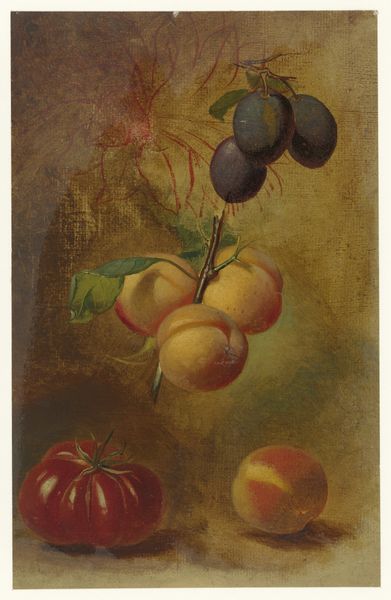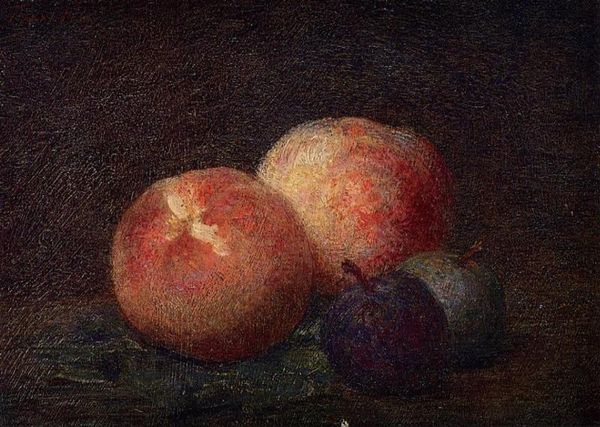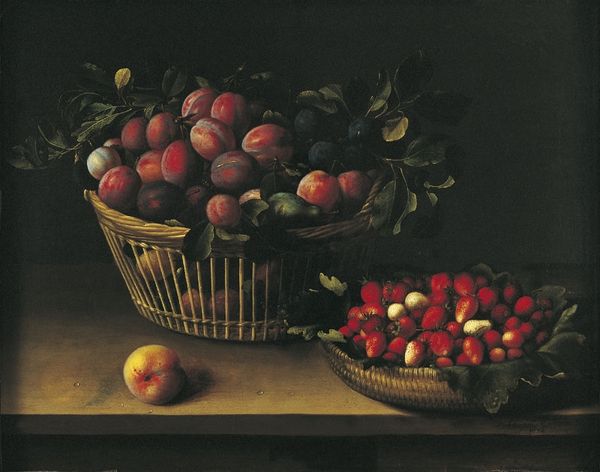
painting, plein-air, watercolor
#
painting
#
impressionism
#
plein-air
#
landscape
#
watercolor
#
fruit
#
post-impressionism
#
impressionist inspired
#
watercolor
#
realism
Dimensions: 54 5/8 x 11 5/8 in. (138.4 x 29.5 cm)
Copyright: Public Domain
Editor: So, here we have John La Farge’s "Orange Branch," painted sometime between 1880 and 1883, and it's a watercolor. It’s making me think about abundance and nature’s bounty. How would you interpret this work? Curator: I see "Orange Branch" as a potent commentary on colonialism and its impact on cultural identity. La Farge's choice to depict an orange branch, a symbol laden with exoticism for Western audiences of that era, speaks volumes. Consider the labor and displacement inherent in bringing such "exotic" fruits to Western tables. It invites us to question the systems that facilitate the movement of goods across the globe and at what cost. What do you notice about the style and execution in relation to its cultural context? Editor: Well, the impressionistic style seems almost celebratory, focusing on the beauty of the oranges and blossoms... I hadn’t really considered its deeper implications before. It's in the Met, after all. Curator: Exactly! That stylistic choice, seemingly innocuous, further complicates the narrative. Is the painting celebrating nature, or is it tacitly endorsing the exploitative structures that bring that “nature” to us? Consider also that La Farge traveled extensively in the Pacific. His work became entangled with Western perceptions of exotic cultures. Does this change your perception of the work at all? Editor: Yes, definitely. I’m now seeing a tension between the painting's surface beauty and the historical context of resource extraction and cultural appropriation. It’s not just a pretty picture of oranges; it's about power dynamics and representation. Curator: Precisely. Art often functions as a reflection—and sometimes a critique—of the societal forces at play during its creation. Hopefully, this kind of dialogue encourages viewers to consider art and its impact in critical ways. Editor: Thanks, this really reframed how I think about still-life paintings and landscape. I appreciate the insight!
Comments
No comments
Be the first to comment and join the conversation on the ultimate creative platform.
